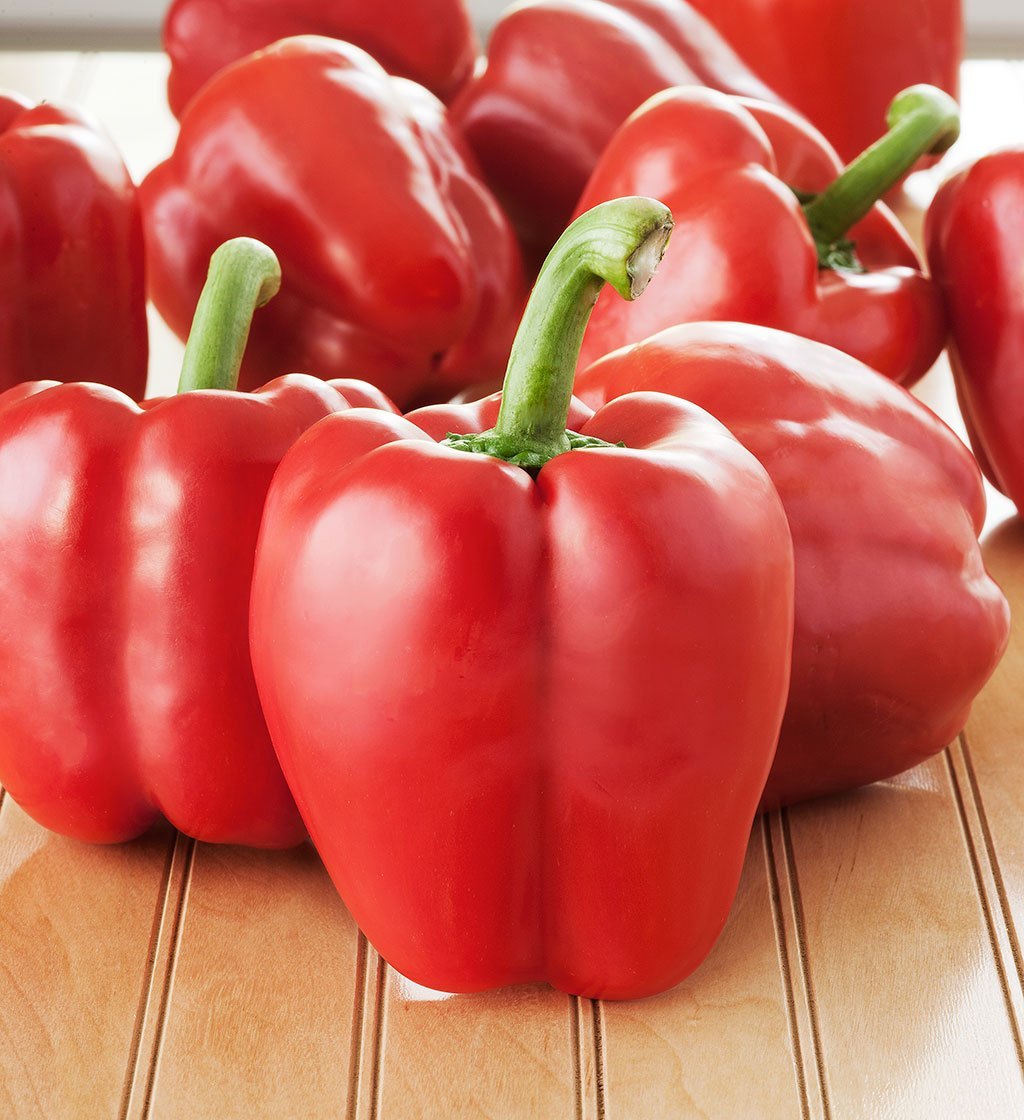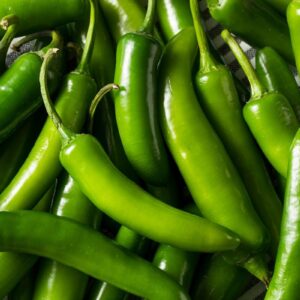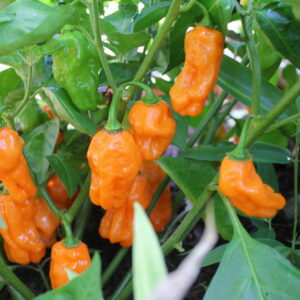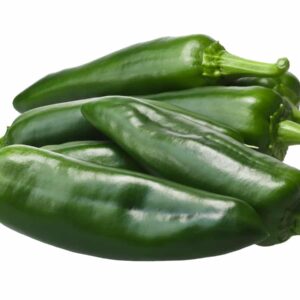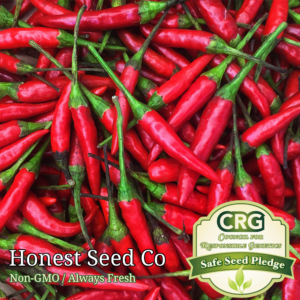Requires full sun. Planting: Space 12-48 inches apart, depending on type. (See information below for specific recommendations.)
Soil requirements: Peppers need well-drained, nutrient-rich soil. Amend soil with 3 to 5 inches of compost or other organic matter prior to planting. Soil pH should be 6.2 to 7.0.
Water requirements: Keep soil consistently moist throughout the growing season. Mulch soil to reduce water evaporation.
Frost-fighting plan: Pepper is a hot weather crop. A light frost will damage plants (28º F to 32º F), and temps below 55º F slow growth and cause leaves to look yellowish. If a surprise late spring frost is in the forecast, protect newly planted seedlings with a frost blanket.
Common issues: Plants drop flowers when daytime temps soar above 90º F. Few pests bother peppers, but keep an eye out for aphids, slugs, pill bugs and leaf miners. Humid weather (especially in gardens with heavy soil that doesn’t drain well) can invite fungal diseases like leaf spot.
Harvesting: Peppers mature in 65-95 days. Some peppers turn red, yellow, or other colors at maturity. Others are ready in the green stage, but will turn red if left on plants. Use pruning shears or a sharp knife to cut peppers with a short stub of stem attached. Pulling peppers by hand can cause entire branches to break off. Fruits store longer for fresh use if you don’t remove the stem, which can create an open wound that’s ripe for spoiling.
Storage: Store unwashed (or washed and dried) peppers in the refrigerator in a loosely closed plastic bag. Moisture is a pepper’s enemy and hastens spoiling. For peak flavor and nutrition, use within a week. Peppers can also be easily dried.

